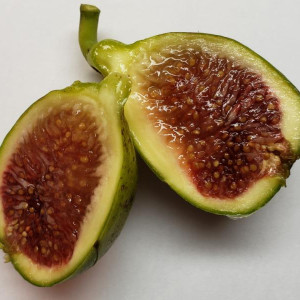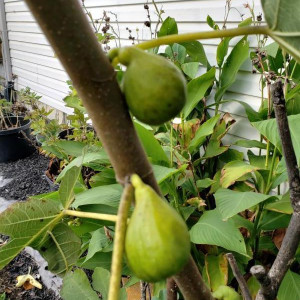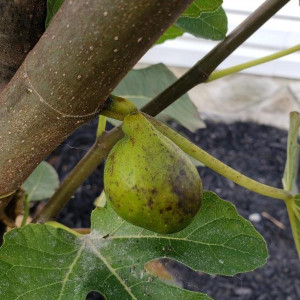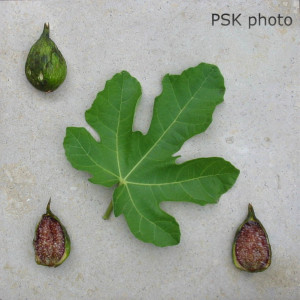This site contains affiliate links for which I may be compensated.
Green Ischia
Green Ischia Information
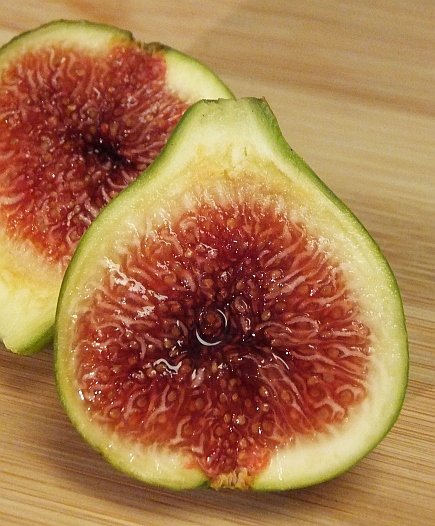
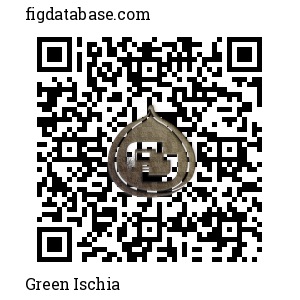
-
Possible Synonyms / AKA:
DFIC 52, Brockett Hall, De Cour, De Cuers, Des Dames, Ficus carica aulica Risso, Figue d’Espangne, Figue d’Hiver, Green Ischan, Green Ischia, Ischia Green (UCD), Singleton, Trompe-Cassaire, Verdale, Verdalle, Verte Coeur,
White Ishchia,Verte -
Introduced By:
Hanc Mathies -
Origin:
-
Main Flavor Group:
Other - A unique combination of flavors, blending fruity, tropical, sweet, and acidic notes. This diverse profile creates a dynamic taste experience, often with hints of complexity and refreshing undertones. -
Family Group:
-
Fig Type:
Common - Self fertile and will grow anywhere conditions are suitable -
Cold Hardy:
Yes -
Container Variety:
Yes -
Easy Rooting:
Average -
Main Season:
mid -
Availability:
Excellent -
Breba Crop:
N/A -
Seed Crunch:
N/A -
Eye:
small -
Skin Toughness:
moderate -
Fruit Size:
Medium to large -
Rain Resistance:
Excellent -
Tree Vigor:
Medium -
External Links:
https://npgsweb.ars-grin.gov/gringlobal/accessiondetail.aspx?id=1001677
http://figs4funforum.arghchive.com/post/Anybody-growing-Ischia-Green-5256120__trail_100
http://figs4funforum.arghchive.com/post/anyone-growing-ischia-green-usdaucd-6453503
https://www.ourfigs.com/forum/figs-home/481979-green-ischia-%F0%9F%91%8D
http://figs4fun.com/Info/Info_Green_Ischia.html
https://www.ourfigs.com/forum/figs-home/184246-difference-in-flavor-of-green-ischia-verte-and-strawberry-verte
https://www.ourfigs.com/forum/figs-home/523184-green-ischia-boone
Description
Green Ischia has been grown for centuries in Europe and was described by eighteenth-century British gardener and writer Philip Miller in The Gardener's Dictionary. This standard reference, published in London, was used by many sophisticated early American gardeners and Thomas Jefferson had the 1768 edition in his library at Monticello. This variety, also called 'Verte', is a better producer in short growing seasons than most figs. Figs can be successfully grown in pots, especially in northern climates. Jefferson had unusual success with figs by growing them below the vegetable garden wall in what he called the "submural beds." He noted their appearance at the table in 1816 and 1820.
From Just Fruits & Exotics:
Skin color is often what draws birds to when to come eat, this variety is green as grass when ripe, fooling both you and the birds. Harvest Green Ischia when the fruit has a soft give when squeezed. High quality green fig with dark red flesh. Closed eye mean good rot resistance. Ripens July-Aug.
Posted 07/11/11 by Herman2 ( VS = Vasile Surugiu):
People say it is the same fig,because I Condit describe it as being the same fig,in Hilgardia.
After all I have seen the many error in I C book,I would side with J Verdick and say is different. Only someone that have both from reliable sources can pinpoint the difference.
I have Green Ischia from UCD ,and Bataglia green from Paradise N,which seem to be related but not the same. Also in the past California collection had 2 accessions ,separated,about these cultivars and one was green ischia and the other was verte.
Edit:I finally have seen a difference between Green Ischia and White Ischia ,looking at pixes from fig4fun and pixes of green Ischia here.
That is:White Ischia has totally round fruits,
:Green Ischia has positively, elongated fruits ,with a pronounced neck.
They are not the same cultivar!
That is:White Ischia has totally round fruits,
:Green Ischia has positively, elongated fruits ,with a pronounced neck.
They are not the same cultivar!
By Tung (doubleblue) March 3rd 2021:
Condit mentioned the Ischia figs on his book HILGARDIA as below
“The Ischia Figs"
Rogers (1834) stated that all the Ischia figs introduced by Miller from an Italian island of that name were of first quality. Barron (1868e) reported that Miller probably lost or destroyed the original labels of Italian figs, and then substituted such names as Ischia or Genoa in their places. In the 1759 edition of his Gardener’s Dictionary, Miller briefly described the Brown or chestnut-colored Ischia, the Green Ischia; the Yellow Ischia, and the Small Brown Ischia, but not the White Ischia.
Several later writers treat White Ischia and Green Ischia as synonymous, but in this monograph the two are treated separately, the latter as Verte. White Ischia will be described simply as Ischia, others of the group as Ischia Black , Ischia Brown, and Ischia Yellow. The last is briefly mentioned under “skin green or yellow.”
Ischia (syns. White Ischia, Singleton, Brocket Hall). Described by Royal Horticultural Society catalogues of 1831 and 1842, M’Intosh (1855), Hogg (1866), Barron (1868c, 1891), Wright (1894), Wythes (1890a, 1893), Eisen (1885, 1888, 1897, 1901), Forrer (1894), S. H. B. (1896), Price and White (1902); Starnes (1903), Starnes and Monroe (1907), Royal Hort. Society (1916), Gould (1919), Hume (1915), Bunyard and Thomas (1904), E. A. Bunyard (1925, 1934), Mowry and Weber (1925), Cook (1925), Arnold (1926), Condit (1921b, as Lipari; 1947), R. A. (1937), and Preston (1951). Illustrated by Eisen, Price, Starnes, and Condit (1941a, fig. 2, B).
As explained above; the exact identity of this variety is uncertain, the name White Ischia having been applied after its introduction into England, where it proved to be especially good for pot culture and for forcing. Barron (1868c) thus gave his opinion of it: “The little White Ischia is very fickle in respect to quality; the fruits of today are excellent, of three days hence watery and tasteless; the tree bears fruit as profusely as a gooseberry bush.” Accounts of the variety in the southern United States are somewhat uncertain, because of the possible confusion of the White and Green Ischia. Starnes found Ischia White “decidedly the first choice” for Georgia, where the fruit shriveled and dried naturally on the tree in good seasons. In 1948, a tree of this variety was found growing at Grosse Coate, near Easton, Maryland.
According to Eisen, Ischia was introduced into California in 1853 by W. B. West, from a nursery in Boston, and in 1883 the California Nursery Company, Niles, received it from England. It was also brought in as P.I. No. 18,886 of the Chiswick collection. Large trees are commonly found in the Sierra Nevada foothills, and before 1922 there was a small orchard of at least eighty-four trees near McFarland in Kern County. One of the largest trees of this variety is on the place of Mrs. Nettie Sullivan, Grabner P.O., Fresno County, near the upper end of Millerton Lake; it is reported to have been planted by Wilburn Winchell in 1851. In Merced County an Ischia tree is growing in a dooryard at Plainsburg.
The tree has a dense habit of growth, with numerous small, short twigs; terminal buds are olive green in color. Leaves small, glossy above, mostly 3-lobed; upper sinuses shallow and narrow; base truncate, sometimes decurrent; margins crenate (plate 13). Description of figs is from specimens grown at Riverside.
Breba crop small or none; fruits below medium, spherical, with very short neck; stalk short and thick; eye rather large, open; color of skin green, tinged with violet; pulp light strawberry; quality poor.
Figs of second crop borne profusely; size small, averaging 18 grams in weight, up to 1-1/2 inches in diameter by 1-1/4 inches from base to apex; shape oblate to spherical, with or without short neck; stalk short and thick, or up to 1/2 inch long, sometimes swollen toward the apex; ribs narrow, prominent; eye medium, open, scales pink; surface dull, with faint bloom; white flecks scattered and inconspicuous, as shown by Condit (1941a, fig. 9, H); skin checking crisscross, discolored or blemished by circular brown spots at complete maturity; color green, flushed with violet; meat white, thin; pulp very light strawberry; flavor sweet; quality fair. (Plates 9; 15, D.). Caprified specimens slightly larger and heavier; pulp deep strawberry; flavor somewhat Acid .”
If you'd like your banner to be shown here and throughout Fig Database, send us a message.
Photos Add Your Image
YouTube Videos
No Videos Found





